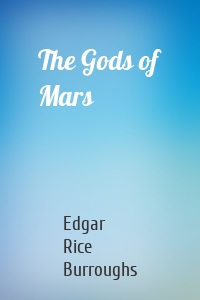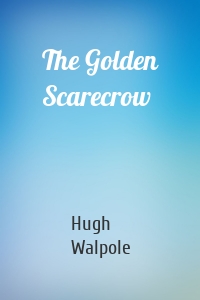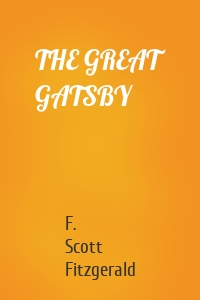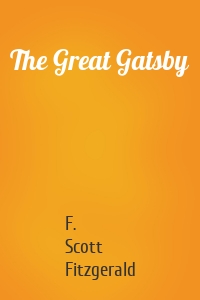Зарубежная классическая проза
6404 кн.
The Eustace Diamonds
"The Eustace Diamonds" by Anthony Trollope. Published by Good Press. Good Press publishes a wide range of titles that encompasses every genre. From well-known classics & literary fiction and non-fiction to forgotten−or yet undiscovered gems−of world literature, we issue the books that need to be read. Each Good Press edition has been meticulously edited and formatted to boost readability for all e-readers and devices. Our goal is to produce eBooks that are user-friendly and accessible...
| Автор | Anthony Trollope |
The Eustace Diamonds
The third and least political novel of the Palliser series, «The Eustace Diamonds» concerns the beautiful pathological liar Lizzie Greystock. Determined to marry into wealth, Lizzie snares the ailing Sir Florian Eustace and quickly becomes a widow. Despite the brevity of their marriage, Lizzie still inherits according to the generous terms of Sir Florian's will, which include the Eustace diamonds. When the Eustace family solicitor, Mr. Camperdown, begins to question her legal claim to the...
| Автор | Anthony Trollope |
The Forsyte Saga
Consisting of three novels and two interludes, “The Forsyte Saga” chronicles several generations of an upper middle class British family at the beginning of the twentieth century. Full of social satire, “The Man of Property” commences this fictional history and introduces the first generation of Forsytes, prominently featuring Soames and his wife Irene. Keenly aware of their nouveau riche standing and highly desirous of material possessions, Soames especially demonstrates the opposing forces of...
| Автор | John Galsworthy |
The Gilded Age
"The Gilded Age: A Tale of Today" is the collaborative work of Mark Twain and Charles Dudley Warner that satirized the era of political greed and corruption that followed the American Civil War. This period is often referred to as «The Gilded Age» because of this book. The corruption and greed that was typical of the era is exemplified through two fictional narratives; one of the Hawkins family, a poor family from Tennessee who try to get the government to purchase their 75,000 acres of...
| Автор | Mark Twain |
The Gods of Mars
In Edgar Rice Burroughs’ sequel to “A Princess of Mars”, we find John Carter returning to Mars after a ten-year absence. First published serially in 1913, “The Gods of Mars” is the second volume in the “Barsoom” series. “A Princess of Mars” ended with the heroic Carter being unwillingly transported back to Earth. Having been long separated from his wife Dejah Thoris, his unborn child, and the Martian people of Helium that he has adopted as his own, Carter struggles to return to them. However, he...
| Автор | Edgar Rice Burroughs |
The Golden Bowl
Henry James’s 1904 novel “The Golden Bowl” is the story of Prince Amerigo, an impoverished but charismatic Italian nobleman who travels to London to marry Maggie Verver, the only child of the immensely wealthy American financier and art collector, Adam Verver. While in London, Prince Amerigo meets his former mistress, Charlotte Stant, who is Maggie’s close friend and soon to marry Maggie’s widowed father. Amerigo and the beautiful Charlotte find themselves often in each other’s company and the...
| Автор | Генри Джеймс |
The Golden Scarecrow
"The Golden Scarecrow" by Hugh Walpole. Published by Good Press. Good Press publishes a wide range of titles that encompasses every genre. From well-known classics & literary fiction and non-fiction to forgotten−or yet undiscovered gems−of world literature, we issue the books that need to be read. Each Good Press edition has been meticulously edited and formatted to boost readability for all e-readers and devices. Our goal is to produce eBooks that are user-friendly and accessible to...
| Автор | Hugh Walpole |
The Good Soldier
Leonora and Edward Ashburnham were «good people» from England, as John Dowell, the narrator of this tale, explains: and Dowell and his wife, Florence — leisured Americans of solid stock — were, like their English friends, a «model couple.»For a dozen years, the foursome cultivated and maintained a friendship reinforced with yearly meetings at a fashionable German health resort, which Dowell visited with his «ailing» wife and the Asburnhams traveled to because of Edward's...
| Автор | Ford Madox Ford |
The Good Soldier
First published in 1915, “The Good Soldier” is Ford Madox Ford’s tragic tale of the relationship between two couples. The first couple is English, Captain Edward Ashburnham, the good soldier referenced in the title, and his wife Leonora. The two at first have a seemingly perfect marriage but over the course of the novel is revealed that a constant series of infidelities by Edward has driven Leonora to attempt to exert increasing control over Edward’s affairs, placing great strain on their...
| Автор | Ford Madox Ford |
THE GREAT GATSBY
"The Great Gatsby" is a novel by the American author F. Scott Fitzgerald. The story takes place in 1922, during the Roaring Twenties, a time of prosperity in the United States after World War I. The book received critical acclaim and is generally considered Fitzgerald's best work. It is also widely regarded as a «Great American Novel» and a literary classic, capturing the essence of an era. The Modern Library named it the second best English language novel of the 20th century. The...
| Автор | F. Scott Fitzgerald |
The Great Gatsby
First published in 1925, F. Scott Fitzgerald’s “The Great Gatsby” is widely hailed as one of the most important American novels of the twentieth-century. Fitzgerald’s third novel and his most significant work, it is the tale of the reclusive millionaire Jay Gatsby and his tragic obsession with the lovely and elusive Daisy Buchanan. The novel brilliantly captures the Roaring Twenties, often called the Jazz Age, one of America’s most transformative and iconic time periods. The novel is...
| Автор | F. Scott Fitzgerald |
The Greene Murder Case
"The Greene Murder Case" focuses on the murders, one by one, of members of the wealthy and contentious Greene family. The family comprises two sons and three daughters under the rule of their mother, a bedridden invalid who spends her days feeling sorry for herself and cursing her ungrateful children. The family is required to live in the Greene mansion under the terms of their father's will. Philo Vance takes a hand when, one evening, a daughter of the Greene family is shot to death...
| Автор | S.S. Van Dine |

























